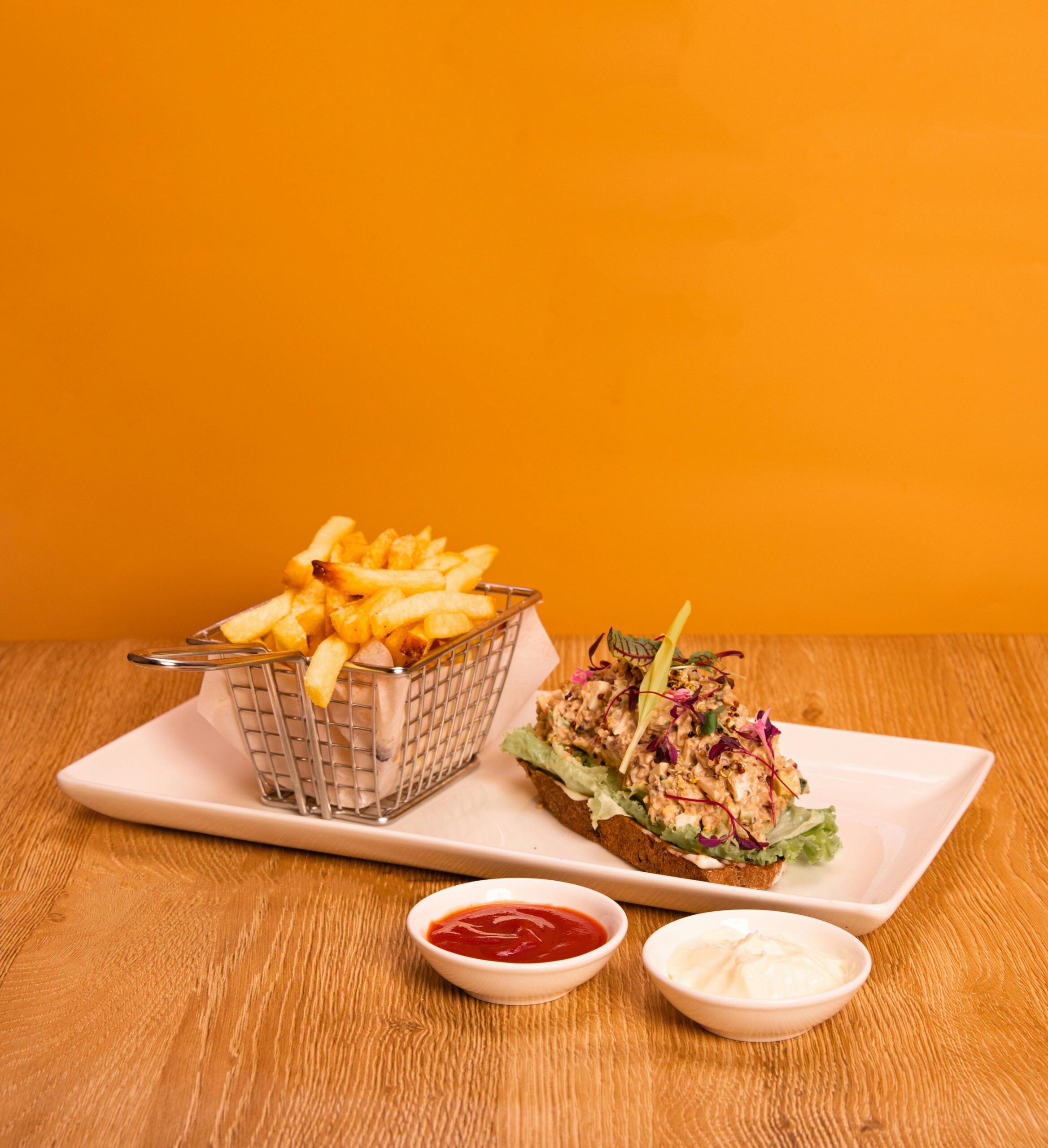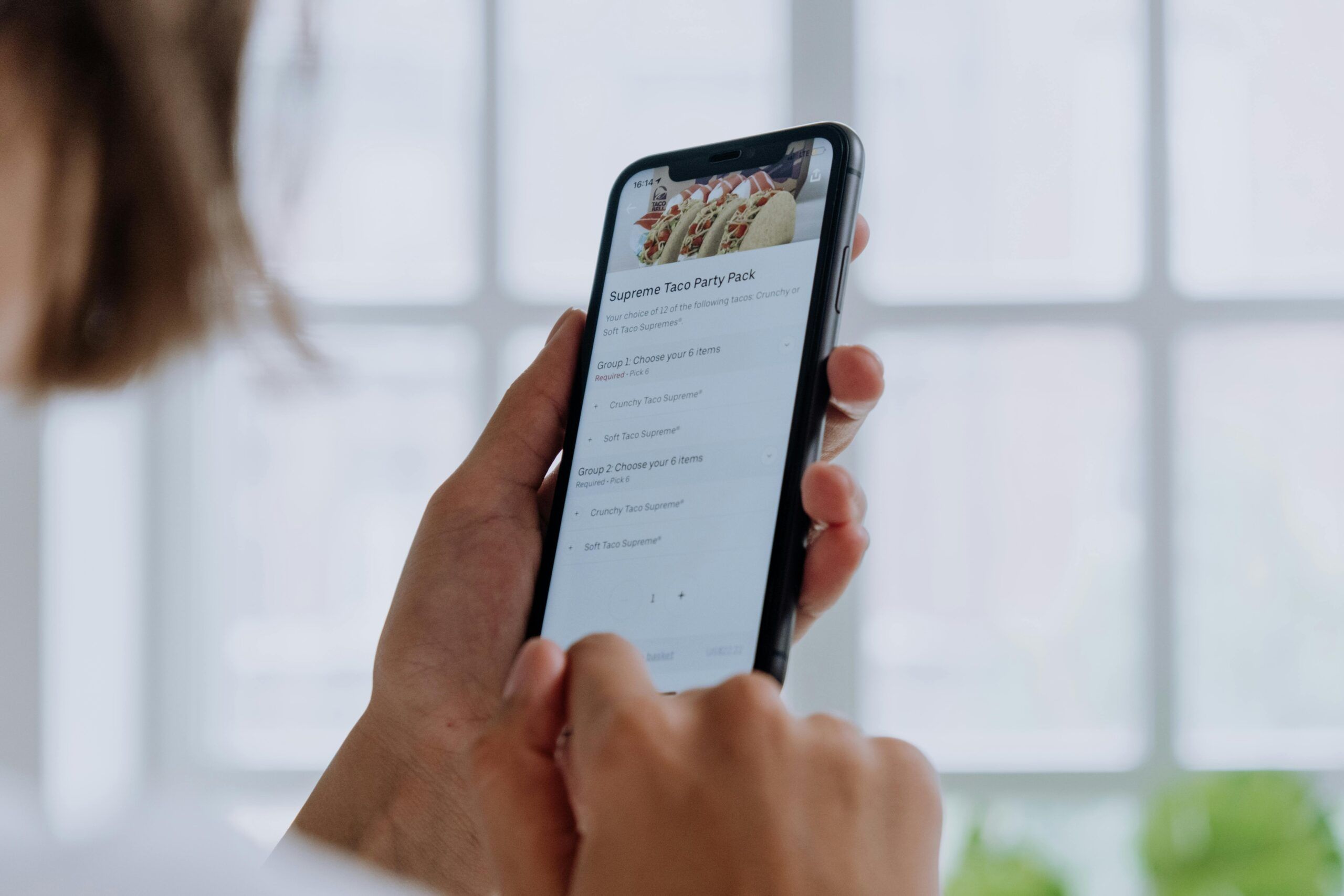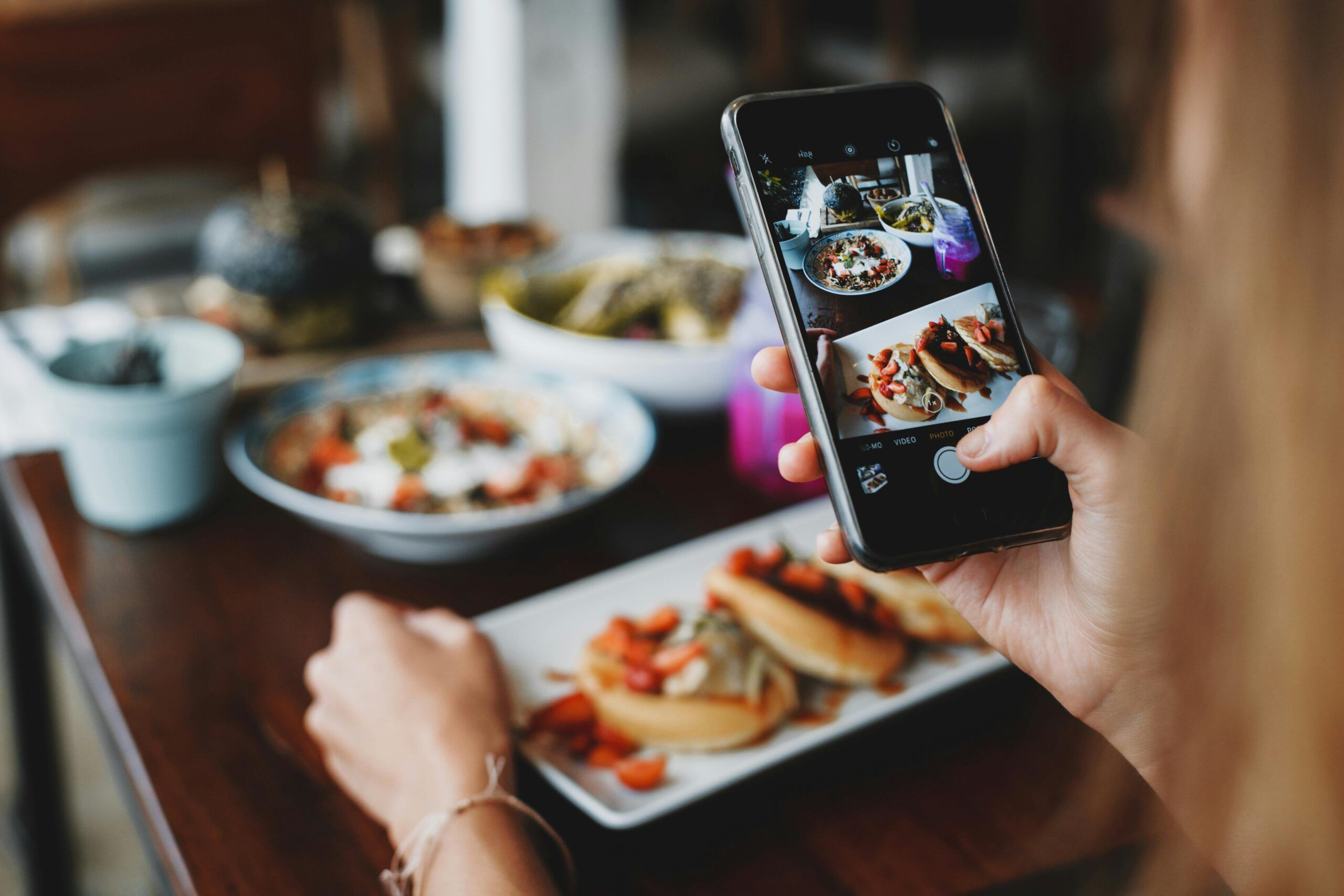- 1. Assessing Your Restaurant’s Capabilities
- 2. Choosing The Right Online Ordering System
- 3. Integrating Your Online Ordering System
- 4. Marketing Your Online Ordering System
- 5. Leveraging Technology To Foster Growth
- Get A Simple And Efficient Online Restaurant Orders Management System
- FAQ
Key takeaways
- Assess your restaurant’s current capabilities and adjust your kitchen workflow and menu to accommodate online orders effectively.
- Choose an online ordering system that integrates seamlessly with your existing operations, focusing on features that meet your specific needs, such as POS integration, customer support, and cost-effectiveness.
- Implement your system carefully, ensuring it aligns with your restaurant’s branding and operational flow while maintaining robust security measures.
- Promote your new online ordering system through targeted marketing strategies, leveraging social media, local partnerships, and loyalty programs to boost engagement and sales.
- Continuously monitor and adapt your system based on customer feedback and performance metrics to refine the service and enhance customer satisfaction.
- Leverage advanced technology like automation, advanced analytics, and mobile solutions to streamline operations and scale up efficiently.
As a restaurant owner, you’ve definitely noticed how big online ordering has become. In just a few years, the user base ballooned to nearly 1.5 billion people worldwide.
It’s obvious now: getting into online delivery isn’t just a nice extra—it’s essential for reaching more people and boosting your sales.
We know that picking and setting up the right online ordering system might seem overwhelming, but let’s reframe that: it’s a fantastic chance to connect better with your customers and make your day-to-day smoother.
This guide is here just for you—to help you sort through your options easily and effectively.
Why does picking the right system matter so much?
Because your restaurant is one-of-a-kind, you need a strategy that brings out the best in what you do and tackles your specific challenges head-on:
Here’s the information presented in a friendly and straightforward table format:
| Aspect | What It Means | How It Helps |
| Expand Your Reach | Say goodbye to the limits of your physical location. | Reach diners well beyond your local area, pulling in customers from across the city and beyond. |
| Increase Your Sales | Make every interaction on your platform a revenue opportunity. | Use smart features that suggest additional items, boosting the average order value. |
| Optimize Your Operations | Smooth out the behind-the-scenes action in your restaurant. | Sync with your existing POS systems to streamline ordering, reduce errors, and improve customer satisfaction. |
This targeted approach enhances your operations and ensures that every customer interaction reflects the quality and care they expect from your restaurant.
Also read:
- How to Increase Restaurant Sales With Online Ordering
- How To Get More Online Orders & Manage Them Efficiently For Restaurants
- Maximizing Your Restaurant’s Profit Margins through Effective Pricing Strategies
- 17 Tips to Take Your Restaurant Delivery to the Next Level
Now, let’s go through the essential steps in setting up your online restaurant delivery system.
1. Assessing Your Restaurant’s Capabilities
Before diving into the digital ordering pool, it’s crucial to take a good look at your current restaurant setup. Understanding your kitchen’s capacity to handle online orders is the first step. This includes examining your kitchen workflow and delivery logistics.
Ask yourself:
Can your kitchen staff manage an increase in order volume?
Do you have the space and equipment to maintain efficiency during peak times?
These insights will help you gauge whether you need to scale your operations or adjust your workflow.
Next, let’s talk about your menu. Not every dish that’s a hit in-house will travel well. Here are some tips for adapting your menu for delivery:
- Packaging: Choose packaging that maintains food temperature and texture. Make sure it’s sturdy enough to prevent spills and keep the presentation neat.
- Food Quality Maintenance: Test how well your dishes hold up after 30 minutes in transit. This might mean tweaking recipes or cooking techniques to ensure the food arrives in the best condition.
- Item Popularity: Analyze your sales data to identify which items are favorites and consider featuring them prominently on your online menu. Popular items are more likely to be ordered repeatedly, boosting overall sales.
Taking these steps will prepare your restaurant for a smooth transition to online ordering and enhance the customer experience, ensuring that your food impresses, even from a distance.
2. Choosing The Right Online Ordering System
Selecting the perfect online ordering system is not just about adopting new technology; it’s about finding a platform that aligns seamlessly with your restaurant’s needs and goals.
Start by considering the most important features to your operation:
- Do you need integration with your existing POS system?
- Are marketing tools essential for promoting your online menu?
- How important are analytics to understanding your sales patterns?
To meet the demands of restaurants that are about to get an online restaurant delivery system, Orders.co offers an all-in-one platform that integrates seamlessly with 30+ POS systems.
With additional features that expand your online reach with an AI restaurant marketing solution and SEO tools, simplifying the online ordering and delivery process with third-party orders management and helping to increase direct orders.
When comparing systems, also consider:
- User Interface: The system should be easy for both your team and customers to use. A complicated process can deter customers and frustrate staff, which might lead to errors and lost sales.
- Support and Reliability: Look for a system with responsive customer support. Reliable tech support is crucial, especially during the initial phases of implementation and during any system outages.
- Cost-effectiveness: Evaluate the cost against the features provided. An expensive system may not be the best fit if it includes features you’ll never use. Conversely, a cheaper option might cost more in the long run if it lacks essential functionality.
By carefully assessing each of these factors, you can choose an online ordering system that fits your current business model, supports its growth, and adapts to future changes.
3. Integrating Your Online Ordering System
Seamless Synchronization
- Website and Mobile App Integration: Integrate the online ordering system directly into your restaurant’s digital fronts. This should be more than just adding a button on your site; ensure the ordering system’s interface mirrors the look and feel of your brand for a seamless customer experience. Today, 60% of all digital orders for restaurants come from mobile devices.
Security Measures
- Robust Data Protection: Implement SSL certificates to secure online transactions and ensure your system complies with PCI-DSS standards. Regularly update your software to protect against new threats. Consider consulting with cybersecurity experts to audit your system’s security.
Staff Training
- Operational Training: Provide detailed sessions on how the online ordering system works. Use role-playing scenarios to cover typical customer interactions, from placing an order to handling a complaint about a delayed order.
- Feedback Loop: Create a channel for staff to report issues or suggest improvements to the new system. This could be a simple form or scheduled feedback session to help you iterate and improve the system.
Rigorous Testing
- Pilot Testing: Run a pilot test by rolling out the new system slowly or, if possible, at a single location. Monitor the performance closely and gather data on order accuracy, time to fulfillment, and customer satisfaction.
- Customer Feedback: After initial implementation, seek customer feedback through follow-up emails or a quick survey at the end of their ordering process. Use this data to fine-tune the user experience.
By focusing on these detailed and actionable steps, restaurant owners can better prepare for a smooth transition to a new online ordering system, ensuring that operational needs and customer expectations are effectively met.
4. Marketing Your Online Ordering System
Now that your online ordering system is up and running, it’s time to get the word out and drum up some business. Here are some straightforward and effective ways to promote your new service and encourage orders:
Launch with a Bang
- Announce Your Launch: Get the excitement going by announcing your new online ordering option across all your channels. Think emails to your subscriber list, social media posts, a website banner, and even eye-catching signs in your restaurant. Why not kick things off with a special deal? Offer a discount or free delivery on the first order to really entice people to try it.
Create Compelling Incentives
- Loyalty Integration: If you have a loyalty reward program, make sure it includes your online orders. Give points or special rewards for ordering online to encourage repeat visits.
- Limited-Time Promotions: Spark interest with offers that are too good to miss, like a free dessert with online orders over the weekend. It’s a great way to increase orders during typically slower periods. Members of loyalty programs visit restaurants 20% more often and spend 20% more than those who aren’t members.
Also read:
- Omnichannel marketing for restaurants – What is it? How can it benefit your restaurant?
- A Complete Restaurant Marketing Checklist
Engage with Content And Social Media
- Share Your Story: Build a connection by sharing behind-the-scenes looks at how your dishes are prepared or where your ingredients come from. This kind of transparency entertains and builds trust with your customers.
- Showcase Customer Praise: Don’t be shy about showing off great reviews and testimonials from happy customers. Seeing others enjoying your service can persuade new customers to give it a try.
- Regular Posts: Keep your followers engaged by sharing appealing photos of your dishes, especially those that are perfect for takeout. Consider running targeted ads on platforms like Instagram and Facebook to reach potential customers right in your local area.
Boost Your Local Presence
- Optimize for Local Search: Make sure people in your area find you first when they’re hungry. Use tools like Google My Business to improve your local business optimization in local search results.
- Form Local Partnerships: Look for opportunities to partner with nearby businesses or events that could use your food services. This can open up a whole new customer base for your deliveries.
This way, you’ll spread the word about your online ordering and engage and expand your customer base, setting the stage for increased sales and lasting relationships.
5. Leveraging Technology To Foster Growth
Enhance your restaurant delivery management system’s efficiency and scalability by embracing advanced technology:
- Automation: Deploy automation to efficiently manage routine tasks like order tracking, inventory updates, and customer inquiries. Implement route optimization software to improve delivery times, ensuring faster and more reliable service.
- Tracking and Analysis: Review order patterns, including volume, timing, and preferences. This information helps you optimize your menu and service times to meet customer demands effectively.
- Feedback Utilization: Collect and analyze customer feedback through surveys or digital platforms. Use this data to address areas of concern and continuously improve service quality.
- Continuous Improvement: Regularly update your menu based on customer preferences and seasonal trends. Enhance the user experience by simplifying the ordering process and ensuring your website and mobile platforms are easy to navigate.
Focusing on specific improvements and directly addressing customer feedback ensures that your restaurant delivery management system meets and exceeds customer expectations, enhancing satisfaction and promoting repeat business.
Get A Simple And Efficient Online Restaurant Orders Management System
In conclusion, setting up a successful online restaurant delivery system requires strategic planning, integrating advanced technology, and continuously adapting based on customer feedback.
Using a comprehensive platform like Orders.co can dramatically streamline this process.
Here are some of the features that our platform covers:
Multichannel Orders Management
The platform also excels in managing orders from various channels, such as direct website orders, mobile app orders, and third-party services. This consolidation helps manage orders more efficiently, reduce the possibility of errors, and speed up service delivery, all of which contribute to a smoother operation and better customer experience.
Menu Management
Orders.co simplifies the management of your online menu and customer interactions, enhancing your operations and improving customer engagement.
It offers a suite of features, including menu management tools that allow quick updates and syncing across all channels, ensuring consistency and reducing administrative tasks.
This streamlined approach to menu management ensures that your offerings are always current and appealing, directly influencing customer choices and satisfaction.
Third-Party Dispute Management
Orders.co’s AI dispute management assistant helps restaurants manage chargebacks quickly and effectively, saving you money and time. This feature suggests actions for disputes and learns from your choices to get faster over time.
It also includes a calculator that shows how chargebacks are affecting your earnings. Plus, it works with more than 30 different POS systems, making it easy to integrate into your current operations.
System Integration
Orders.co provides seamless integration with your existing systems, including POS and payment gateways, ensuring that all aspects of your restaurant operation work together efficiently without requiring extensive reconfiguration.
Reporting Features
The platform offers advanced reporting features that allow you to generate detailed insights into your sales, customer behavior, and overall business performance, enabling data-driven decision-making to further optimize your operations.
By embracing Orders.co, you set up an optimized ordering system and invest in a solution that supports your restaurant’s growth, visibility, and customer engagement.
Ready to see the difference?
Schedule a FREE demo with Orders.co to discover how these features can streamline your operations and elevate your restaurant’s online presence.
FAQ
What are the first steps to take when considering a restaurant delivery system for a new restaurant?
Before diving into any specific restaurant delivery management system, assess your target market’s needs, research local competitors’ delivery options, and determine the scale of delivery service you want to provide.
How do I choose the right delivery vehicles for my restaurant delivery system?
Consider factors such as the size of the delivery area, the type of food you are delivering, local traffic conditions, and efficiency (like fuel economy for cars or scooters).
Can a restaurant delivery system help in improving customer loyalty?
Yes, integrating features like order tracking, loyalty programs, and personalized marketing based on past orders can enhance customer satisfaction and encourage repeat business.
What are some common challenges when scaling up a restaurant delivery system?
Common challenges include managing increased order volume, maintaining food quality during transit, expanding delivery zones without compromising timeliness, and scaling customer service effectively.
How often should I update the technology behind my restaurant delivery system?
Regularly review your restaurant delivery management system’s performance quarterly or bi-annually and consider updates or changes to software and hardware annually to keep up with technological advancements and evolving customer expectations.
What are the key metrics to track the success of a restaurant delivery system?
Key metrics include delivery time, order accuracy, customer satisfaction ratings, repeat customer rate, and average order value. Monitoring these can help you gauge system efficiency and pinpoint areas for improvement.



